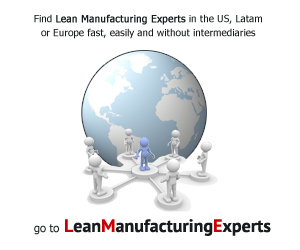Are ‘Concrete Heads’ Wrecking Your Lean Manufacturing Efforts?
Question: Lean or CI experts seem to be the first to get laid off at manufacturers. How can we change this mentality of management? Also, there is a tendency to outsource many products instead of fixing the processes in the U.S.A. and making sure all of the expenses of making overseas, including quality problems and transportation, are looked at before the decision is made.
Answer: I don’t know what role in the company this reader plays, but I’ll address both questions since the root cause for both is the same. Your management are known as “concrete heads.” This is a term often used by Art Byrne, who led the transformation of Wiremold a few decades ago. These are so-called leaders who don’t get “it,” don’t want to get it and won’t listen to those who do get it, understand it and simply need their “leaderships” support to go do it!
If I were you I’d update my resume and find a more enlightened business that’s focused on improving the business and developing a CI culture of involvement for all. Otherwise you’ll forever be frustrated and unhappy and simply putting in your time for unappreciative bosses. While you’re at it, find a great company to work for, and facilitate an opportunity for the best of your current co-workers to go with you.
To your specific questions:
1) You can’t change the mentality until/unless the board of directors or owners of the company change out the senior managers. Seems pretty unlikely based on your situation. Anyone who elects to terminate the very people who can improve the business, the right way and the fastest way, deserves whatever outcome they get. After the heinous events of 9/11/01 the economy tanked. At about the same time, the telecommunications segment of our business at General Cable also tanked.
When the fiber trunk lines across the country were turned on, copper trunk cables became a necessity only for maintenance of legacy installations. This was an unstoppable speeding bullet that killed the old paradigm for the business and a new paradigm was created. Not long after that wireless technology emerged as well.
My company’s answer to that was a steep headcount reduction that included corporate staff and the closing of multiple factories. These drastic actions were necessary to stave off bankruptcy of the company. At the time there were six people in the corporate learning center. Four of the six had to be let go. The two who remained were the trainers for lean and Six Sigma both at the learning center and out in the field.
That sent an obvious and powerful wave throughout the rest of the company that our senior leadership would continue to focus and stay on course with CI. Through shorter cycle times and better planning, our inventory reduction of hundreds of millions of dollars kept the creditors away until higher volumes were restored a few years later. That’s the mindset that enables success with CI.
2) The second part of your question regarding outsourcing is the kind of mistake many companies made years ago during their exodus to the Far East in general and, more specifically, to China. The fury of finding low-cost labor in those days is being reversed slowly since China’s labor costs have gone up substantially the last five years or so, plus China’s labor is far less efficient than in the U.S. You may have seen articles penned by Harry Moser under the banner of “onshoring” and his “Reshoring Initiative,” which details the progress being made. Not surprisingly, China remains the reason why our trade balance is so negative. U.S. imports/exports are relatively balanced except in the case of China. The U.S. trade deficit with them was nearly $400 billion last year.
Lots of companies have made these outsourcing decisions. Some are regretting it and reversing course. Just like in the reader’s case, many companies failed to look at the total supply chain costs and instead just compared unit cost prices in the purchasing department. There simply wasn’t enough holistic thinking applied, not enough collaboration with cross-functional resources, not enough good data analysis involved to make good decisions.
As a result lead times went from days or a few weeks to 90 days or more. Inventories became bloated to supply customers in the U.S. for a three-month-or-more cycle time. Warehouses were expanded or built to hold the inventories. There was no clear traceability of quality issues because of the long delays from when defects were produced and when they were found half way around the world.
Bottom line to the reader’s question is this: I’m not surprised that your company made bad decisions on outsourcing. There were many companies that learned this lesson the hard way. But as I said at the top of this article, the root cause for the reader’s current managers’ ailments is the same for both questions. These managers do not have the correct mindset for continuous improvement. The culture necessary must be supported by education, training and communications. The management group must be open to new ideas and interested in leveraging the brain power of all employees. This mindset is clearly not and won’t be in place until major changes are made. Sorry, but it seems you’ll have to continue to check your brains at the employee entrance and pick them up on the way home until you take control and find the right fit for you.

 News, training, experts opinion, bibliography, software and everything about Lean world.
News, training, experts opinion, bibliography, software and everything about Lean world.
